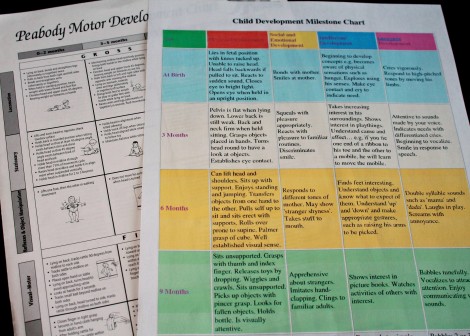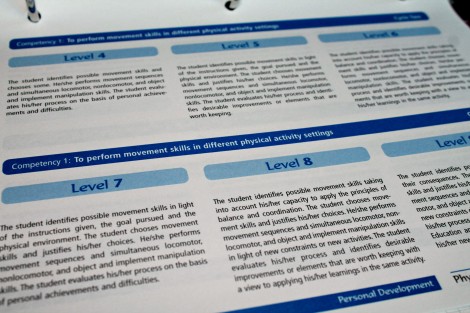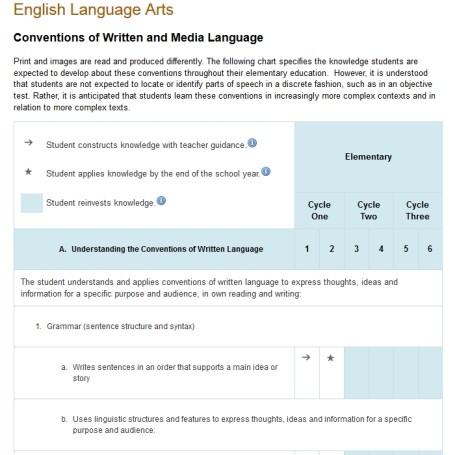Almost everything in life is progressive. We move from one stage to the next taking newfound knowledge along with us. Each phase can be subdivided into smaller stages.
The continuum of life moves from conception to birth to childhood to adolescence to adulthood to old age, and, finally, to death. Childhood alone can be broken down into a progression of its own: infancy, toddlerhood, preschool age, school age, then, adolescence.
If we want to get an even closer look, there are smaller stages between infancy and toddlerhood in terms of movement, feeding, fine and gross motor development, reflexes, speech/language, and visual-motor development.
The developmental continuum for locomotion/movement for an infant looks like this: random movements, rolling over, sitting, crawling, standing and walking. Each phase builds upon the next. Each step is nurtured by parents in a way that is appropriate for the stage. For instance, babies who are just learning to sit up are often propped up with pillows. Parents use encouraging words and perhaps toys to keep babies engaged at that floor level.
Parents instinctively know what to do to reassure, strengthen and gently push their babies in the right direction to get them to the next phase–no matter which developmental progression we are working on. Books might tell us what to do to make it more interesting, but parents have known before the existence of literature how to foster their baby’s development.

These motor development charts are continua that let you know what precedes a certain skill/milestone and what follows it.
Phases.
Stages.
Steps.
Spectrums.
Continua.
Progressions.
No matter how you term it, these words represent the evolution, growth and development that human beings use to get from point A to point Z in any aspect of life.
Educational Progressions
Education works in the same way. There are continua and sub-continua and sub-sub-continua in each and every step in a child’s learning. There may be a general continuum for English Language Arts, then a sub-continuum for reading, and a sub-sub-continuum for phonemic awareness.
Children learn to write, read, speak, spell, count, compute from a starting point and progress from stage to stage at their own rate and in their own way.

This is our local Quebec continua that is provided by the Ministry of Education as a means to support the educational approaches of teachers. It shows all of the learning a student is to acquire from grade 1 to grade 6 for each subject. This one is the Physical Education continuum. Note: “Levels” do not stand for grade levels, but levels of competency instead. For example, The Phys. Ed continuum for “performing movement skills in different physical settings” has a total of 9 competency levels that a child must achieve by the time they complete elementary school.
What are you doing to nurture a child`s learning at each stage?
In the last post, I wrote about the importance of focusing on progress over performance.
But, how do you do that?
The answer lies in understanding and respecting continua. In the same way that a parent encourages a baby in early development, you can encourage a learner in education.
Keep in mind that although you’d like to push a child along to keep them at age or grade level, it’s a misguided way to approach education.
Think about this: When a baby was first experimenting with random movements as a newborn, the parent suddenly put up gates and moved furniture out of the way in preparation for walking. They supported them by holding them under their arms in a standing position. They did not have the same expectations with a newborn. They cuddled and swaddled them and kept them laying down for much of that phase.
Think of education in the same way.
Using Educational Continua Instead of Standards
One of the best tools we have as educators are learning continua. As homeschooling parents of neurodivergent or disabled children, these documents help validate and support our teaching. As teachers, they help move us away from standards and help us focus on where the learners are truly at.
Where to begin:
Begin with your provincial/state website.
What to look for:
For some practice in understanding the progressions, ask yourself:
- What subject intrigues me right now? Math? English Language Arts? Search for that subject in your province/state’s Ministry of Education search bar.
- What grade level is the child closest to? Find the grade level in that subject.
- Which concept can I focus on? Computation in math, literacy in ELA?
Take some time with the documents. They are a little overwhelming at first but can be helpful over time.
How to use learning continua for your neurodivergent or disabled child:
Continua are valuable tools if used to:
- Plot a child on a continuum to see where they’re at
- Plan your teaching using the chart as a guide
- Assess/evaluate a child’s progress (like a rubric) by highlighting the goals reached
- A child can assess/evaluate themselves as an active participant in the planning/learning process
- Use the continua to speak with other professionals that work with the child (a PT might be interested in a gross motor continuum while an SLP would be interested in the ELA continua you’re using)
- Differentiate your teaching to the needs/levels of each of the children (one continuum for each child–or one continuum highlighted in different colors representing each child)
Even if the child has learning difficulties or developmental delays, plot them on a learning continuum. It gives you the visual representation of where they’re at and as well as clear objectives to help guide them to the next phase.

This is a page out of the Quebec Progression of Learning for English Language Arts-Conventions of Written and Media Language. The three cycles for elementary school are listed across (shaded in blue) and the criteria for learning are listed in the left-hand column. The first criteria are that the child learns to “write sentences in an order that supports a main idea or story.” You can see that this concept is taught with much teacher guidance in the first year of cycle 1 (grade 1) and the student is only expected to do it on his own by the end of cycle 1 (grade 2). The skill is then developed in all other cycles.
But the terminology is different from one continuum to another?
Each country/province/state has their own progression of learning and the terminology differs for each location. You’ll find that even independent publishers come up with their own wording. Some use the words “emerging” to mean “developing” and “beginning to,” and some use each of those within the same continuum so that one “emerges,” develops,” and then “begins to…”
In essence, they all aim to do the same thing.
If you choose a Ministry-created continuum to follow, you’ll likely be speaking the same language as other homeschoolers/teachers in your area who are also using those. If you prefer Ministry-created continua, stick with those.
If you choose to move away from standardized language, use can another resource (such as those in the suggestions below). This ensures that you not only become proficient with the terminology, but you’ll be able to see the progress over time.
Alternatives to Ministry Learning Progressions
Many publishers have created their own continua. You can find learning continua per subject, per level, and per concept.
Keep in mind that a good continuum doesn’t label the stages by age or grade level.
I’d love to know what questions/hesitations you might have about using educational continua. Or, do you already use them and have a link to share?
Additional Resources:
- First Steps Reading Developmental Continuum sample – The First Steps tool was developed in Australia but is used in Canada and the USA as well.
- Bonnie Campbell Hill Continuum Support Materials (continua in many different languages, however, it labels the stages by age level – simply erase those on your copy)
Related articles:
- Meeting A Learner Where They’re At: Progress Versus Performance
- Planning the Home Education Year – Part 10: Assessments and Evaluations (more links to continua and rubrics)

0 Comments